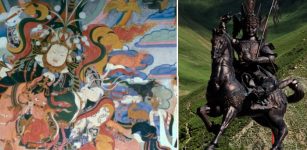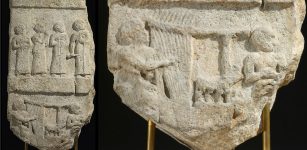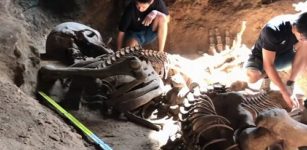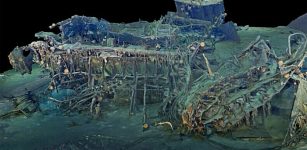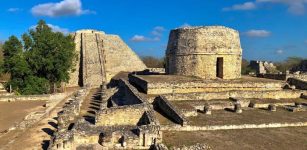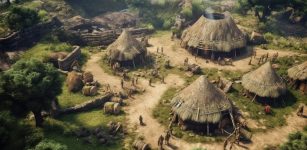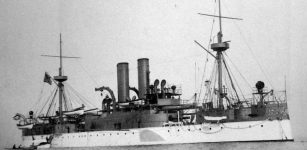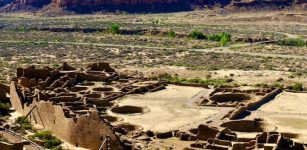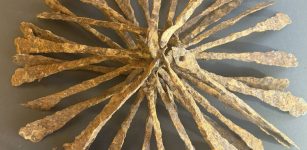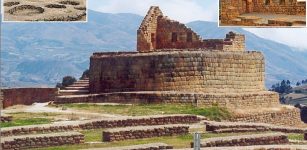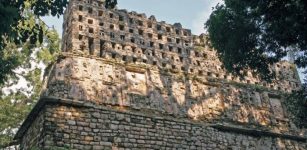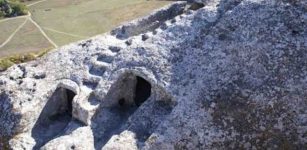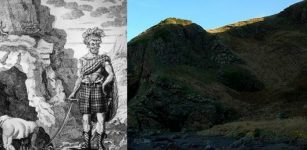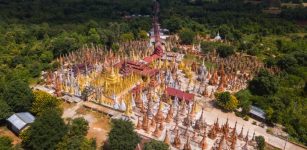Ancient Secrets Of Sacred Lismore – Is There A ‘Second’ Iona In Scotland?
AncientPages.com - Isle of Iona is not only a very beautiful place. It is also a place associated with deep spirituality and a destination frequently visited by pilgrims. In ancient times, isle of Iona was of special importance to the Druids.
With the arrival of St. Columba Iona became a Christian sanctuary, but before that the island was known by its Gaelic name “Innis-nam Druidbneach”, which means the Island of the Druids.
Lismore, Scotland.
Some of the Druids’ most important mystery schools were located on the Island of Anglesey (Island of Mona) and on Iona, the Island of the Druids.
When St. Columba and his 13 followers reached Iona, they converted the Druids’ mystery school into a Christian monastery.
St. Moluag Cut Off His Finger On Lismore
Archaeologists are investigating Lismore, a tiny Scottish island in Loch Linnhe, Argyll. Being a small island, remotely located with only a population of around 200, few people have heard of Lismore. However, there is evidence Lismore was as historically important as the isle of Iona, and it is now time to find out what ancient secrets are hidden on this remote island.
See also:
Picts: Facts And History About Mysterious People Of Northern Scotland
Dandaleith Stone: Scotland’s Rare Symbol Stone Of The Picts – Will It Be Deciphered Now?
Mystery Of The Beautiful Viking Uig Chessmen Found On The Isle Of Lewis, Scotland
Lismore was a center of ritual and power for more than 1,000 years but few records of its important role have been preserved. This beautiful island was a sacred place of the Picts and an important center for early Christianity with St. Moluag settling on the island. St. Moluag (530-592) was a Scottish missionary, and a contemporary of Saint Columba, who evangelized the Picts of Scotland in the sixth century.
Experts believe Lismore, pictured here in the foreground, was a major seat of ritual and power for more than 1,000 years. PIC: Ian Rutherford/TSPL.
Moluag and his followers moved across western Scotland, spreading Christianity and establishing churches. He founded a large religious community on Lismore and created 100 monasteries across Scotland as part of the first wave of Christian evangelists. One of his churches is located on Lismore. The church is known as the Cathedral of St Moluag although today its congregation is Church of Scotland. St. Moluag is said to have staked his claim to Lismore by cutting off his finger and throwing it onto the island as he raced St. Columba to the shore in a boat.
Lismore Was As Important As Iona To Christians
According to Dr Clare Ellis, of Argyll Archaeology, St. Columba, widely regarded as the man who spread Christianity across Scotland from his abbey on Iona, the importance of St. Moluag remains relatively unknown. He points out there is something special, almost magical about Lismore and the island is just as important as Iona was to the Christians.
“In terms of the development of Christianity it is as just as important. Lismore is really on a parallel with Iona but it is just an unknown story. There has not been the same level of documentation or excavation carried out there,” Dr Clare Ellis, said.
Left: St. Moluag Right: St Moluag's Cathedral on the Isle of Lismore
Archaeologists hope they will unravel some of Lismore’s ancient secrets and gain a better understating of the island’s history. In the 1950s, eighty skulls were found on a dig at the cathedral site. They will now be examined to determine their age.
In addition, a large number bones, both animals and human at the same site. Tests will be carried out on mortar used in the cathedral’s construction to give an accurate reading of when it was built. It is hoped to expose and preserve the cathedral remains, open them up to the public and create an outline of the entire building to highlight the historical significance of the site.
Dr Ellis added: “The cathedral was likely to have been harled or white and would have looked quite dramatic in that part of Argyll at the time. “Most of the buildings then would have been small and made from timber so the cathedral would have been quite an impressive site.”
AncientPages.com
Expand for references



